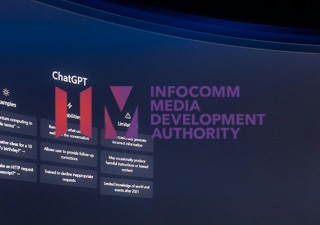R We Similar?
31 March 2024

A recent Intellectual Property Office of Singapore decision in the matter of Google LLC v. Green Radar (Singapore) Pte Ltd delved into the complexities of trademark law in Singapore while highlighting the crucial balance between protecting one’s brand and promoting market competition.
Background
Green Radar (Singapore) Pte Ltd. (the applicant) is a Singapore-incorporated company and is principally engaged in the distribution of IT security products and the provision of IT security services, which applied to register the mark  (the application mark) in Classes 42 and 45. The application mark is used on email security services to defend against “bulk spams, virus, malware, spoofing emails, phishing” and the like, but not email services per se.
(the application mark) in Classes 42 and 45. The application mark is used on email security services to defend against “bulk spams, virus, malware, spoofing emails, phishing” and the like, but not email services per se.
Google LLC (the opponent), a global technology company which has owned a trademark registration for “GMAIL” in Class 38 since 2005, renowned for its email service, opposed the application mark, on grounds a) that the marks were confusingly similar; b) that the application mark was similar to its well-known mark thereby causing a damaging connection and dilution; c) of passing off and d) that the application mark was registered in bad faith.
Confusing similarity of the marks
After comparing the conflicting marks side-by-side, the Registrar held the following:
- Visual similarity: There is a moderate level of similarity owing to the intervening “r” and use of the capital letter “M” in the application mark.
- Aural similarity: There is a low level of similarity due to the “ARH” sound for the letter “r’ used in the application mark.
- Conceptual similarity: There is a moderate degree of similarity due to the adoption of the word “mail” into both marks. The Registrar observed that for the opponent’s mark, the “g” would be derived from “Google”, while for the applicant, “gr’ can be seen as derived from its name “Green Radar”.
The Registrar concluded that owing to the key differences between the conflicting marks, the average consumer can distinguish between the two marks.
On an examination of the similarity of goods and services, the Registrar held:
- Uses of the goods/services: The marks are dissimilar as the application mark is used on its security service for emails while the opponent offers an email service for its users.
- Users of the good/services: The marks are similar since both services are rooted in and related to emails.
- Trade channels: The marks are similar as both services are mainly marketed and provided online on each party’s respective websites or online platforms.
- Competitors: The marks are dissimilar since the services can be seen as complementary to each other instead of competitive.
Accordingly, the Registrar held that the respective services of the parties are not similar, and failed the opposition on this ground. However, for the sake of completeness, the Registrar provided an observation on the likelihood of confusion as follows:
Likelihood of confusion. The Registrar held that the question of likelihood of confusion requires an assessment of the earlier two factors of similarity of marks and goods or services and how given these, the relevant segment of the public will be confused.
Since the services of each party do not compete with each other and the relevant public is the consumer who is considering more advanced security options for its email service, there is no likelihood of confusion. Furthermore, the absence of evidence of actual confusion supports this conclusion.
Similarity to a well-known mark thereby causing damaging connection and dilution. Given the Registrar’s finding of absence of confusion under the first ground, opposition under the ground of similarity causing damaging connection likewise failed.
As regards the second limb on dilution, at the outset, the Registrar found the opponent’s mark to be well-known to the public at large in Singapore based on the evidence tendered. However, she found that there was no dilution by blurring, nor was there evidence to show that the Applicant had taken unfair advantage of the opponent’s mark.
Passing off. The law on passing off is well settled and the three elements of goodwill, misrepresentation and damage must be established. Since there was no likelihood of confusion, opposition on this ground failed.
Bad faith. The Registrar clarified that mere knowledge of a prior exclusive proprietary right, even if shown to be a well-known one, cannot in and of itself mean that registration of a similar mark (if so established at all) was done in bad faith. The opponent did not succeed on this ground.
As all the grounds of opposition failed, the Registrar dismissed the opposition and allowed the application mark to proceed to registration.








